A Surreal World: St Trinian’s: The Entire Appalling Business by Ronald Searle
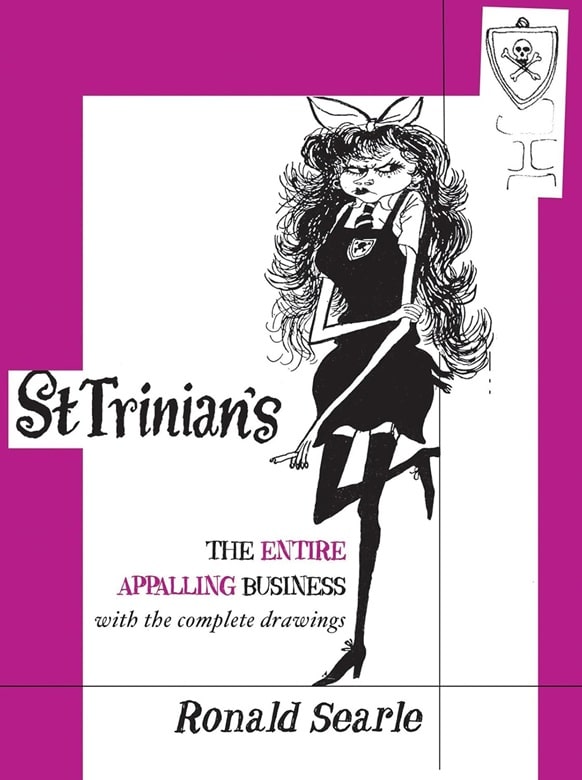 |
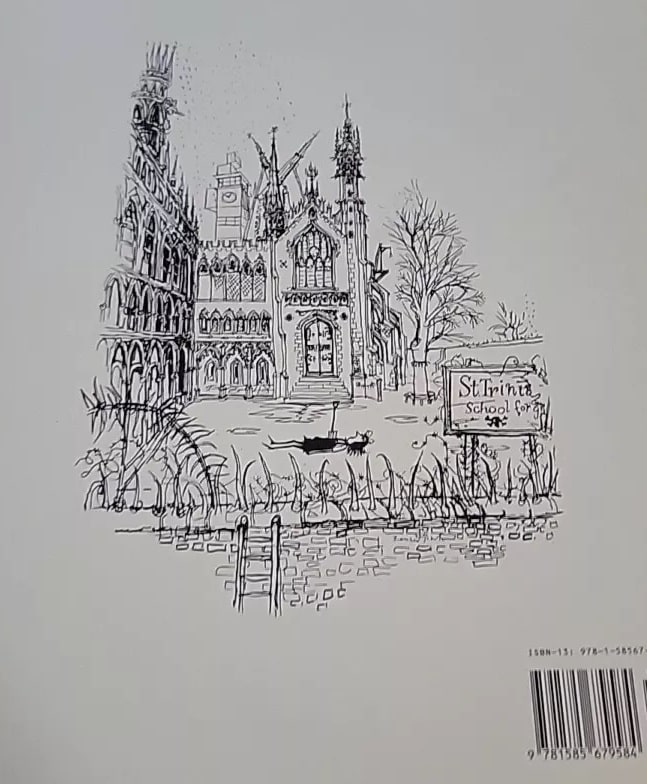 |
St. Trinian’s: The Entire Appalling Business (Overlook/Rookery, March 13, 2008). Cover by Ronald Searle
St Trinian’s was first created in a series of magazine cartoons in the 1940s and 1950s. Ronald Searle began drawing them in 1941, with a long hiatus while he was a prisoner of war in Southeast Asia. Most of them were set at an English boarding school for girls, and the rest showed characters who attended it. The Entire Appalling Business collects all of them in a single volume.
Boarding schools are a long established subject for English storytellers, from Tom Brown’s School Days, an autobiographical novel by Thomas Hughes set at Rugby, to the Harry Potter novels. Most portrayals take them fairly straight, staying within the traditional strictures of boys’ books — or girls’ books, as in this case. But there’s also a more subversive tradition, as in the Kipling stories that were collected as Stalky and Co. Searle’s cartoons are very subversive; that’s the whole point of the joke.
Most of the St Trinian’s girls are children rather than adolescents (some later cartoons show sixth form girls who are visibly more mature, particularly the recurring character Angela Menace). However, many scenes show them smoking — usually cigarettes, but occasionally cigars, and one panel refers to pot — or drinking beer, wine, or spirits. There are also references to gambling, particularly betting on horses or on school athletic events.
They have the usual school sports, particularly hockey and track, but often resort to outright violence or other forms of cheating. The mistresses seem to take all this as a matter of course, only occasionally telling them to use a clean needle to drug an athlete or rebuking them for using weapons in unarmed combat practice.
In fact, Searles’s imagination creates a surreal world, with schoolgirls using weapons from hand grenades to machine guns, or setting fire to school buildings. There are multiple scenes of dead girls and mistresses. Other drawings involve encounters with the supernatural, from Cupid to Satan. It seems only fitting that when Searle decided to bring the series to an end in 1953 (as firmly as Bill Watterson did decades later), he announced that an experiment in nuclear fission had burned the school to the ground, killing the staff and most of the students.
The Belles of St Trinian’s (British Lion Films, September 28, 1954)
Searles’s drawing style shows a delight in grotesquerie that makes me think of his American contemporary Charles Addams, whose own recurring Addams Family began their career in 1938 in The New Yorker. If you have fond memories of Addams’s inversion of values you’re likely to find Searles worth a look.
And Searles’s whimsy was also translated into live action video, in a series of movies that started in 1954 with The Belles of St Trinian’s. There’s also a roleplaying game, Hellcats and Hockeysticks, that played very well when I ran a one-shot session for five of my women players.
Hellcats and Hockeysticks by Andrew Peregrine (Cubicle 7, Aug 9, 2010)
On the other hand, while Wednesday Addams totally failed to fit in at the American public school she attended, she would be right at home at St Trinian’s — which would lose the humorous effect of her family’s eccentricity! The St Trinian’s movies did make a point of the clash between the school and English society, but the original cartoons count on the reader to supply the sense of incongruity. The sheer contrast of schoolgirl uniforms with scenes of crime and vice carries the point all by itself.
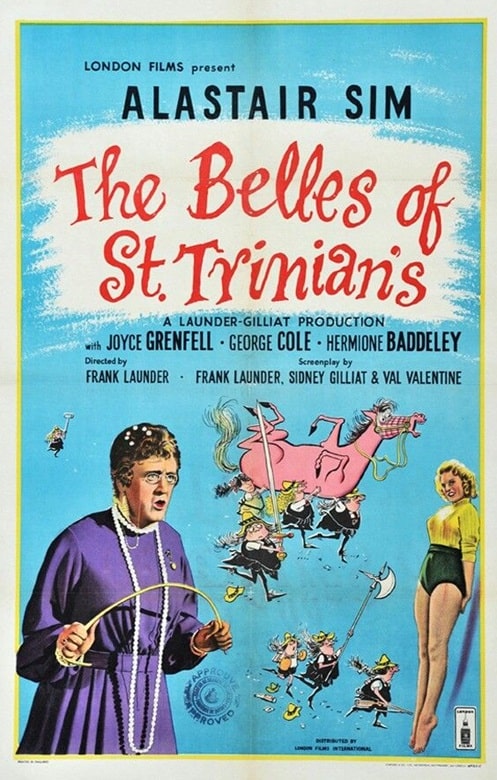 |
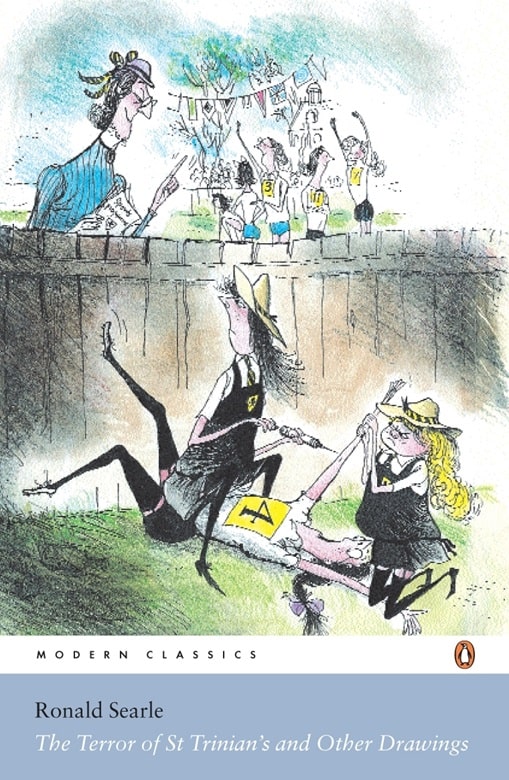 |
Poster for The Belles of St Trinian’s (1954), and The Terror of St Trinian’s
and Other Drawings (Penguin Classic, November 28, 2000), cover by Ronald Searle
The Entire Appalling Business is copyright 2007, which suggests the encouraging thought that that incongruity still appeals to readers half a century later. Perhaps we can be inspired by the headmistress’s lines in The Belles of St Trinian’s:
In other schools girls are sent out quite unprepared into a merciless world, but when our girls leave here, it is the merciless world which has to be prepared.
William H. Stoddard is a professional copy editor specializing in scholarly and scientific publications. As a secondary career, he has written more than two dozen books for Steve Jackson Games, starting in 2000 with GURPS Steampunk. He lives in Lawrence, Kansas with his wife, their cat (a ginger tabby), and a hundred shelf feet of books, including large amounts of science fiction, fantasy, and graphic novels. His last article for us was a review of The Demon Breed by James H. Schmitz.
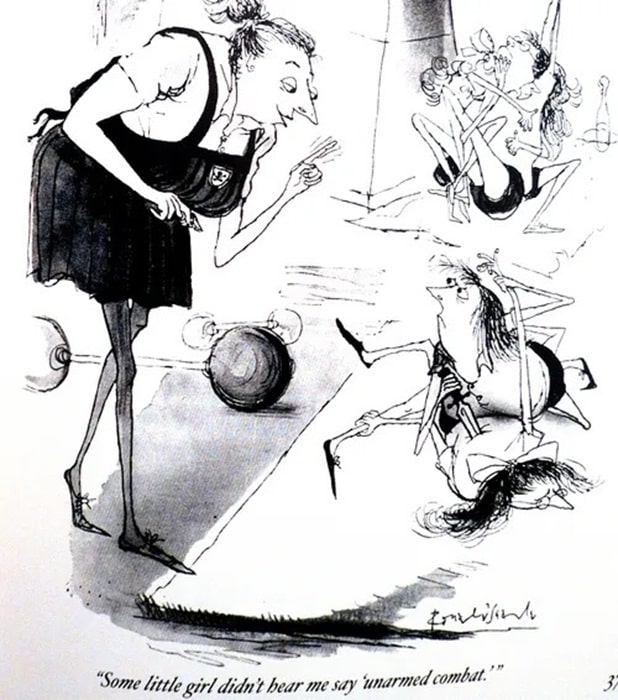
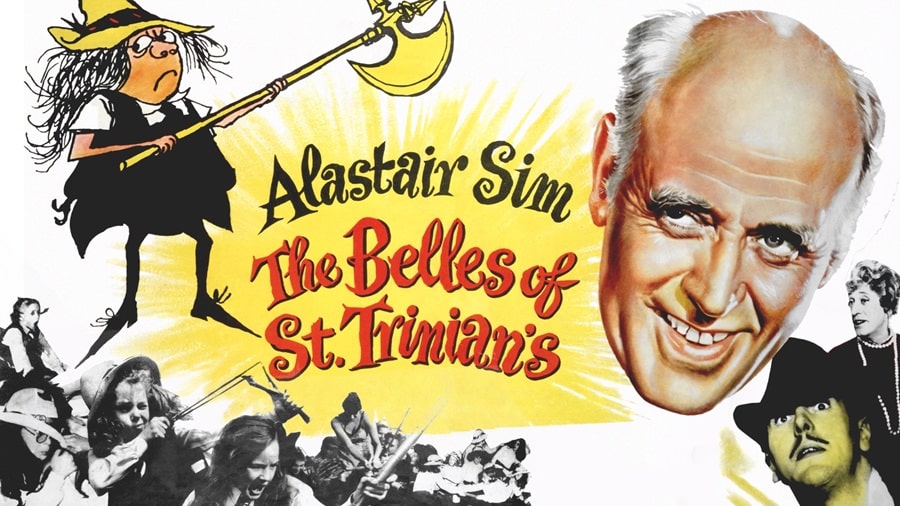

Reading through your article, St. Trinian’s reminded me of William Cole’s deliciously wretched “Beastly Boys and Ghastly Girls,” and then Gail Carriger’s Finishing School series (starting with “Etiquette and Espionage”), and then some of the sly asides in Jasper Fforde’s novels. I wonder how many authors would admit to having been spurred by it, and how many others wouldn’t but actually were, subconsciously.
I’ve recently been re-reading Geoffrey Willans’ “Nigel Molesworth” books, the diary observations of the titular student of St Custards prep school, a lad who is sarcastic as he is illiterate (“As any fule kno”). The books are profusely illustrated by Serle, who is listed as co-author; he really was a wonderful cartoonist.
I quite agree with you on the “Molesworth”, books I’m afraid my wargaming friends and I still quote from the books and we are all long retired. Have you read the follow-on book that Willie Ruston wrote whem Molesworth works for “Grabber Holdings” and Molesworth brother is a hip DJ, a good read.
I have seen a couple of the early movies (The Belles of St. Trinian’s, and The Pure Hell of St. Trinian’s). Other than the movie credits, I had not seen Mr. Searle’s drawings. There were a couple of continuations (one in the 1980s, 2 in the Aughts), but I missed all that. I wonder if I can nose around and find the collected cartoons.
I was able to buy them through Amazon, though they weren’t cheap.